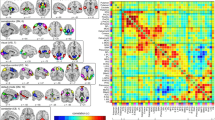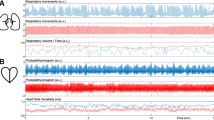Abstract
This study examined the electroencephalogram functional connectivity (coherence) and effective connectivity (flow of information) of selected brain regions during three different attentive states: awake, meditation and drowsiness. For the estimation of functional connectivity (coherence), Welch and minimum variance distortionless response (MVDR) methods were compared. The MVDR coherence was found to be more suitable since it is both data and frequency dependent and enables higher spectral resolution, while Welch’s periodogram-based approach is both data and frequency independent. The directed transfer function (DTF) method was applied in order to estimate the effective connectivity or brain’s flow of information between different regions during each state. DTF enables to identify the main brain areas that initiate EEG activity and the spatial distribution of these activities with time. Analysis was conducted using the EEG data of 30 subjects (ten awake, ten drowsy and ten meditating) focusing on six main electrodes (F3, F4, C3, C4, P3, P4, O1 and O2). For each subject, EEG data were recorded during 5-min baseline and 15 min of a specific condition (awake, meditation or drowsiness). Statistical analysis included the Kruskal–Wallis (KW) nonparametric analysis of variance followed by post hoc tests with Bonferroni alpha correction. The results reveal that both states of drowsiness and meditation states lead to a marked difference in the brain’s flow of information (effective connectivity) as shown by DTF analyses. In specific, a significant increase in the flow of information in the delta frequency band was found only in the meditation condition and was further found to originate from frontal (F3, F4), parietal (P3, P4) and occipital (O1, O2) regions. Altogether, these results suggest that a change in attentiveness leads to significant changes in the spectral profile of the brain’s information flow as well as in its functional connectivity and that these changes can be captured using coherence and DTF analyses.



Similar content being viewed by others
References
Andrew C, Pfurtscheller G (1996) Event-related coherence as a tool for studying dynamic interaction of brain regions. Electroencephalogr Clin Neurophysiol 98:144–148
Astolfi L, Cincotti F, Mattia D, Marciani MG, Baccala LA, de Vico Fallani F, Salinari S, Ursino M, Zavaglia M, Ding L, Edgar JC, Miller GA, He B, Babiloni F (2007) Comparison of different cortical connectivity estimators for high-resolution EEG recordings. Hum Brain Mapp 28:143–157
Baijal S, Srinivasan N (2010) Theta activity and meditative states: spectral changes during concentrative meditation. Cognit Process 11:31–38
Başar E, Başar-Eroglu C, Karakaş S, Schürmann M (2001) Gamma, alpha, delta, and theta oscillations govern cognitive processes. Int J Psychophysiol 39:241–248
Benesty J, Jingdong C, Yiteng H (2005) A generalized MVDR spectrum. IEEE Signal Process Lett 12:827–830
Benesty J, Jingdong C, Yiteng H (2006) Estimation of the coherence function with the MVDR approach. In: Acoustics, speech and signal processing, 2006. ICASSP 2006 proceedings. 2006 IEEE International Conference on, pp III–III
Ben-Simon E, Podlipsky I, Arieli A, Zhdanov A, Hendler T (2008) Never resting brain: simultaneous representation of two alpha related processes in humans. PLoS ONE 3:e3984
Ben-Simon E, Podlipsky I, Okon-Singer H, Gruberger M, Cvetkovic D, Intrator N, Hendler T (2013) The dark side of the alpha rhythm: fMRI evidence for induced alpha modulation during complete darkness. Eur J Neurosci 37:795–803
Blinowska KJ, Malinowski M (1991) Non-linear and linear forecasting of the EEG time series. Biol Cybern 66:159–165
Capon J (1969) High-resolution frequency-wavenumber spectrum analysis. Proc IEEE 57:1408–1418
Christov I (2004) Real time electrocardiogram QRS detection using combined adaptive threshold. BioMed Eng OnLine 3:28
Cincotta AL, Gehrman P, Gooneratne NS, Baime MJ (2011) The effects of a mindfulness-based stress reduction programme on pre-sleep cognitive arousal and insomnia symptoms: a pilot study. Stress Health 27:e299–e305
Cvetkovic D, Cosic I (2008) Sleep onset estimator: evaluation of parameters. In: Engineering in medicine and biology society, 2008. EMBS 2008. 30th annual international conference of the IEEE, pp 3860–3863
Cvetkovic D, Cosic I (2009) EEG inter/intra-hemispheric coherence and asymmetric responses to visual stimulations. Med Biol Eng Comput 47:1023–1034
Dehghani N, Cash SS, Halgren E (2011) Emergence of synchronous EEG spindles from asynchronous MEG spindles. Hum Brain Mapp 32:2217–2227
Eichler M (2005) A graphical approach for evaluating effective connectivity in neural systems. 360
Engel AK, Singer W (2001) Temporal binding and the neural correlates of sensory awareness. Trends Cogn Sci 5:16–25
Franaszczuk PJ, Bergey GK (1998) Application of the directed transfer function method to mesial and lateral onset temporal lobe seizures. Brain Topogr 11:13–21
Franaszczuk PJ, Blinowska KJ, Kowalczyk M (1985) The application of parametric multichannel spectral estimates in the study of electrical brain activity. Biol Cybern 51:239–247
Gevins A, Smith ME, McEvoy L, Yu D (1997) High-resolution EEG mapping of cortical activation related to working memory: effects of task difficulty, type of processing, and practice. Cereb Cortex 7:374–385
Gruberger M, Maron-Katz A, Sharon H, Hendler T, Ben-Simon E (2013) The wandering mood: psychological and neural determinants of rest-related negative affect. Front Psychol 4:961
Hulbert S, Adeli H (2013) EEG/MEG- and imaging-based diagnosis of Alzheimer’s disease. Rev Neurosci 24:563
Kaminski M (2011) DTF calculations package in Matlab. Available: http://eeg.pl/Members/maciek/MMultar
Kaminski M, Blinowska K (1991) A new method of the description of the information flow in the brain structures. Biol Cybern 65:203–210
Kamiński M, Blinowska K, Szelenberger W (1995) Investigation of coherence structure and EEG activity propagation during sleep. Acta Neurobiol Exp, pp 213–219
Kamiński M, Blinowska K, Szelenberger W (1997) Topographic analysis of coherence and propagation of EEG activity during sleep and wakefulness. Electroencephalogr Clin Neurophysiol 102:216–227
Kim K, Yoon H, Park H (2004) Improved ballistocardiac artifact removal from the electroencephalogram recorded in FMRI. J Neourosci Methods 135:193–203
Korzeniewska A, Mańczak M, Kamiński M, Blinowska KJ, Kasicki S (2003) Determination of information flow direction among brain structures by a modified directed transfer function (dDTF) method. J Neurosci Methods 125:195–207
Kryger MH, Roth T, Dement WC (2010) Principles and practice of sleep medicine. Elsevier Limited, Oxford
Lütkepohl H (1985) Comparison of criteria for estimating the order of a vector autoregressive process. J Time Ser Anal 6:35–52
Olbrich S, Mulert C, Karch S, Trenner M, Leicht G, Pogarell O, Hegerl U (2009) EEG-vigilance and BOLD effect during simultaneous EEG/fMRI measurement. NeuroImage 45:319–332
Ong JC, Shapiro SL, Manber R (2008) Combining mindfulness meditation with cognitive-behavior therapy for insomnia: a treatment-development study. Behav Ther 39:171–182
Pereda E, Quiroga RQ, Bhattacharya J (2005) Nonlinear multivariate analysis of neurophysiological signals. Prog Neurobiol 77:1–37
Rombouts SARB, Keunen RWM, Stam CJ (1995) Investigation of nonlinear structure in multichannel EEG. Phys Lett A 202:352–358
Vecchio F, Babiloni C, Buffo P, Rossini PM, Bertini M (2013) Inter-hemispherical functional coupling of EEG rhythms during the perception of facial emotional expressions. Clin Neurophysiol 124:263–272
Ward LM (2003) Synchronous neural oscillations and cognitive processes. Trends Cogn Sci 7:553–559
Welch P (1967) The use of fast Fourier transform for the estimation of power spectra: a method based on time averaging over short, modified periodograms. IEEE Trans Audio Electroacoust 15:70–73
Wilke C, Lei D, Bin H (2008) Estimation of time-varying connectivity patterns through the use of an adaptive directed transfer function. IEEE Trans Biomed Eng 55:2557–2564
Wyczesany M, Ferdek MA, Grzybowski SJ (2014) Cortical functional connectivity is associated with the valence of affective states. Brain Cognit 90:109–115
Zheng C, Zhou M, Li X (2008) On the relationship of non-parametric methods for coherence function estimation. Signal Process 88:2863–2867
Author information
Authors and Affiliations
Corresponding author
Rights and permissions
About this article
Cite this article
Dissanayaka, C., Ben-Simon, E., Gruberger, M. et al. Comparison between human awake, meditation and drowsiness EEG activities based on directed transfer function and MVDR coherence methods. Med Biol Eng Comput 53, 599–607 (2015). https://doi.org/10.1007/s11517-015-1272-0
Received:
Accepted:
Published:
Issue Date:
DOI: https://doi.org/10.1007/s11517-015-1272-0




